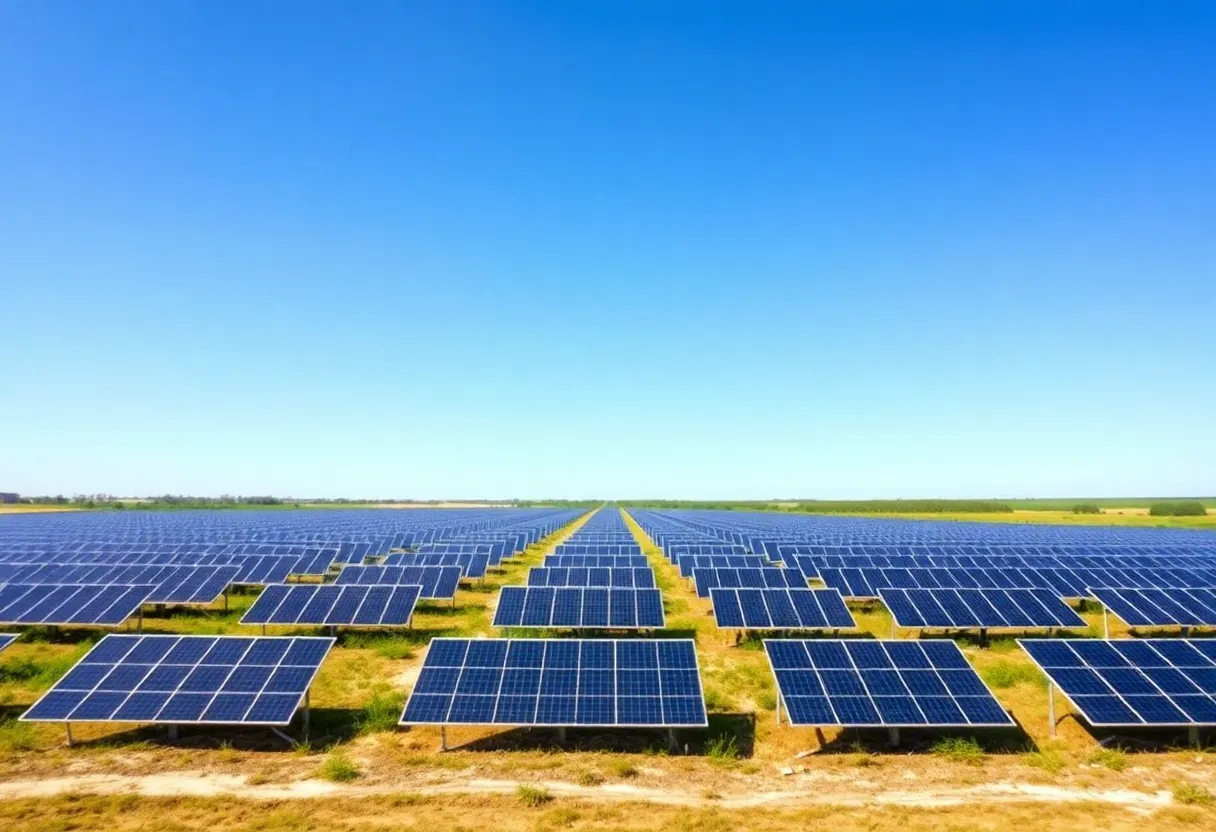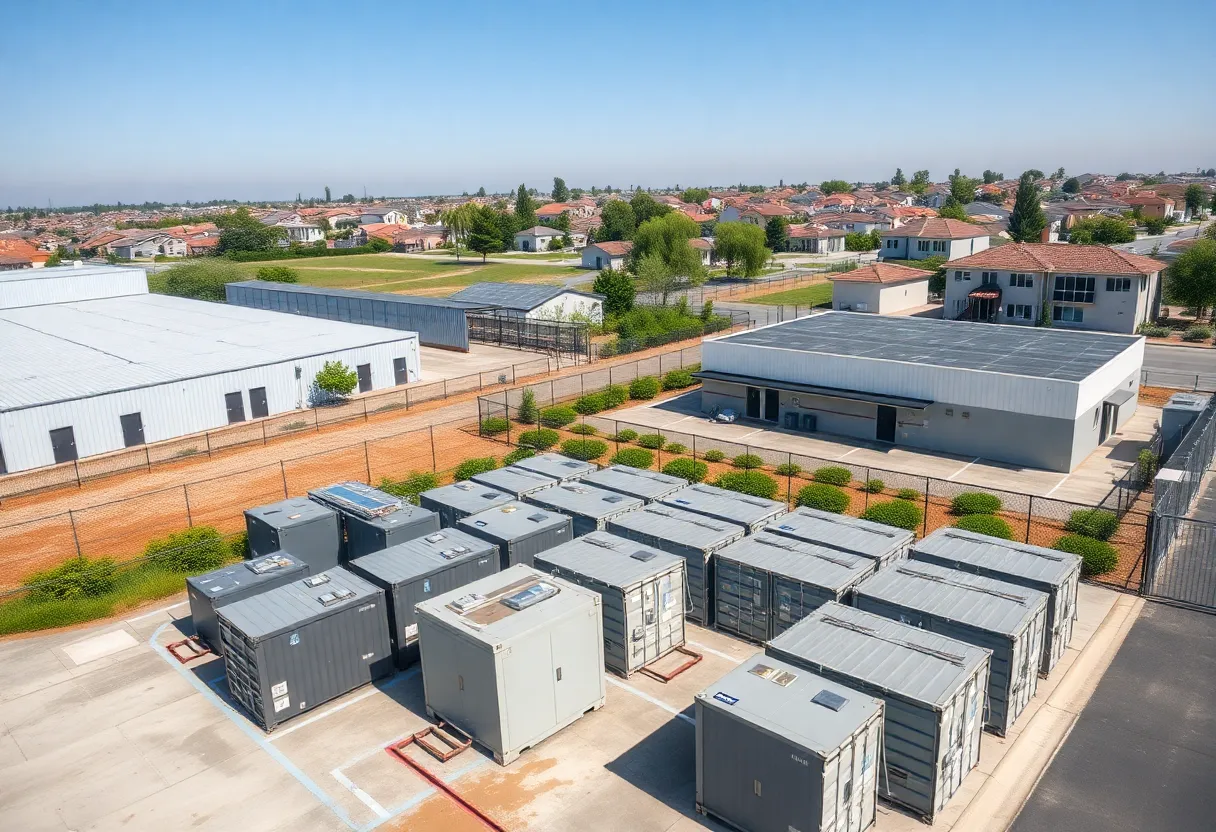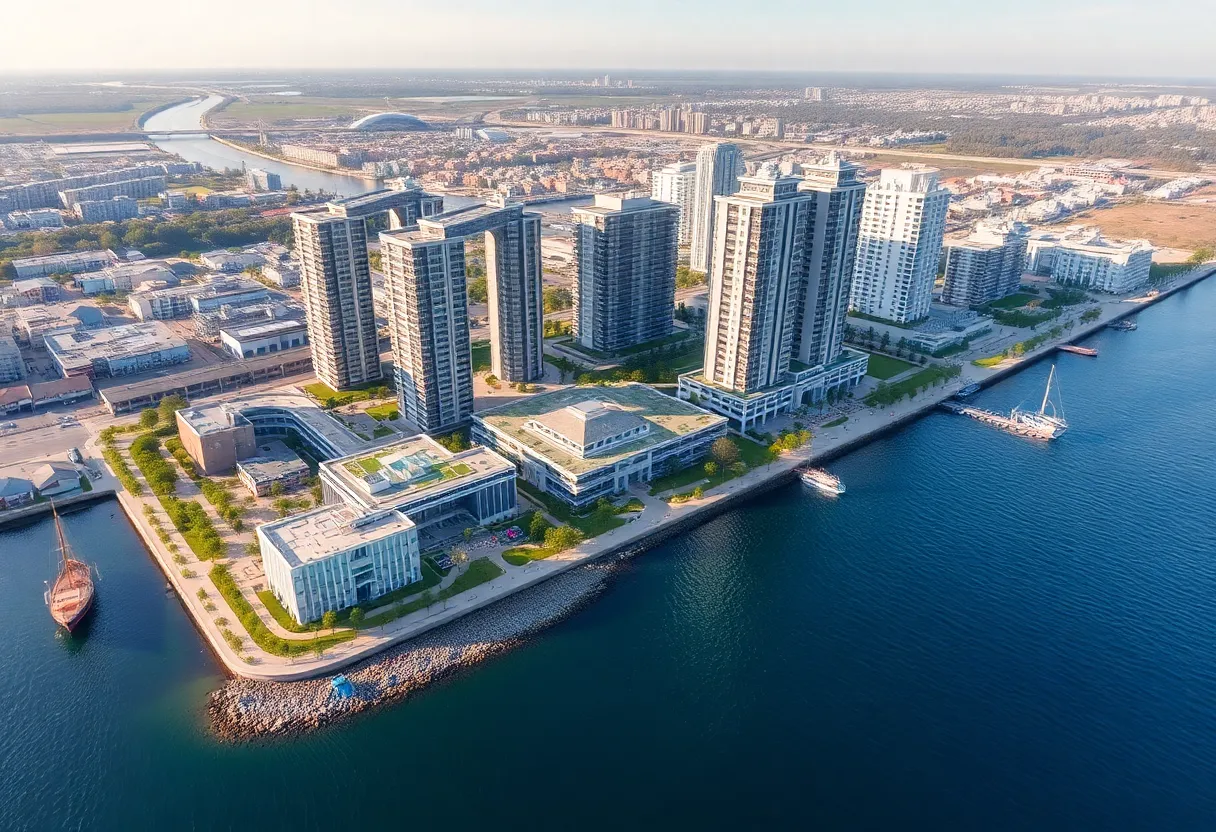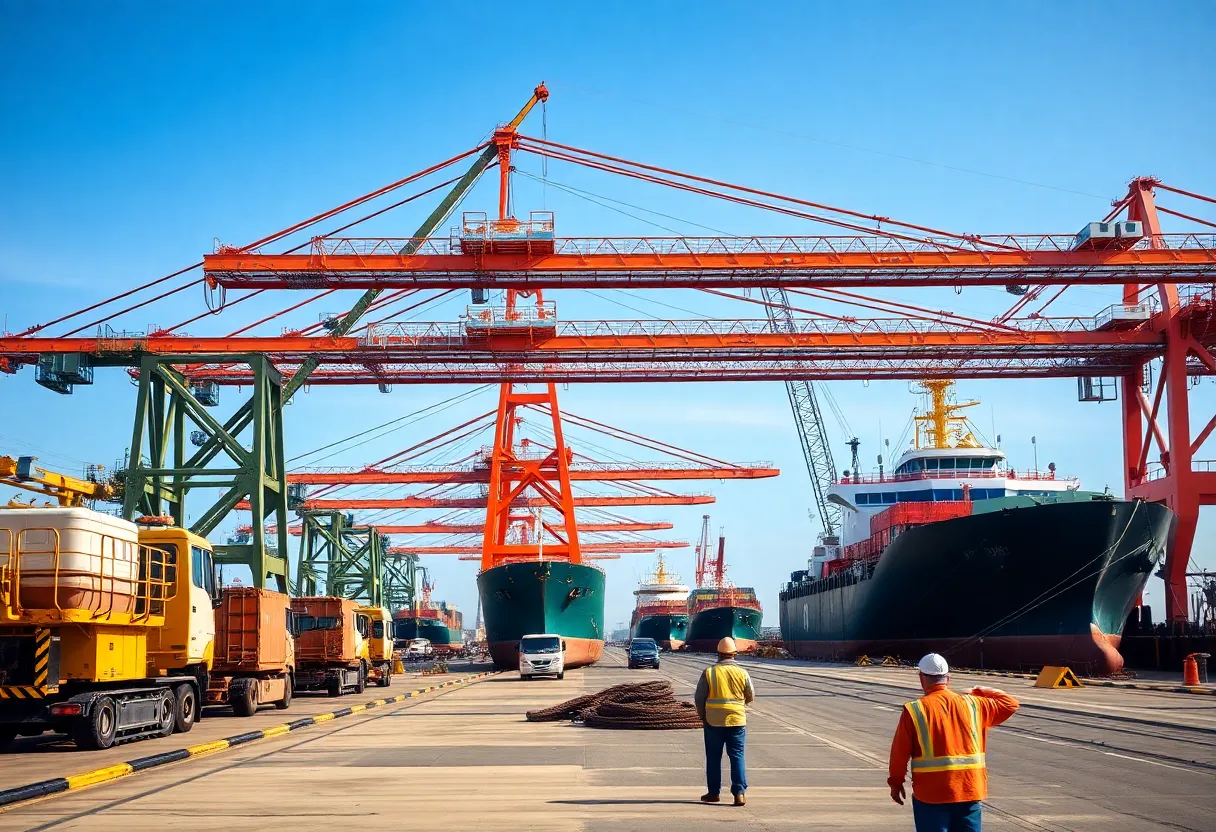News Summary
Astral Energy is leading a $140 million solar farm project in Fort Myers, covering 200 acres. The initiative aims to provide renewable power for thousands of residents and improve local infrastructure. Expected to be operational by 2026, this development marks a significant step in Florida’s push towards sustainable energy, contributing to carbon reduction and economic growth in rural areas.
Fort Myers Solar Farm Construction Advances with Major Project
In Fort Myers, a significant surge in solar farm construction is underway with a 200-acre installation led by Astral Energy. This $140 million project aims to generate renewable power for thousands of residents and businesses, marking a key development in the region’s push toward sustainable energy sources.
The initiative focuses on streamlining permitting processes through state incentives, which have accelerated the project’s progress. This effort not only enhances local energy production but also brings infrastructure improvements to rural areas. Expected to become operational by 2026, the solar farm will play a vital role in reducing carbon emissions across Florida.
Key aspects of the project include seamless integration with existing power grids, ensuring reliable energy distribution. This development underscores Florida’s broader commitment to clean energy goals, positioning the state as a leader in renewable initiatives amid growing environmental demands.
Project Details
The 200-acre solar farm in Fort Myers represents a substantial investment in renewable energy infrastructure. Astral Energy’s project involves advanced solar technology designed to produce electricity for thousands, contributing to the state’s energy diversification efforts. The $140 million budget covers construction, equipment, and integration costs, with state incentives playing a crucial role in expediting approvals.
Infrastructure enhancements from this project will benefit rural communities by improving local grid stability and supporting economic growth. These improvements include upgrades to transmission lines and related facilities, which help mitigate the challenges of energy distribution in less densely populated areas.
Broader Context in Florida
Florida’s pivot to clean energy is evident in projects like this one, where state-level policies promote renewable sources to meet carbon reduction targets. The solar farm aligns with these goals by providing a sustainable alternative to traditional fossil fuels, reducing overall emissions and fostering environmental resilience.
Over recent years, Florida has seen an increase in similar renewable energy projects, driven by incentives that encourage private investments. This trend reflects the state’s strategy to address climate concerns while boosting the economy through job creation in the construction and maintenance sectors. The Fort Myers installation is a prime example of how such initiatives can integrate with existing systems, ensuring minimal disruption and maximum efficiency.
The project’s timeline, with operations starting by 2026, allows for thorough planning and community involvement. This approach helps address potential challenges, such as land use and environmental impacts, ensuring the development supports long-term sustainability objectives.
As construction progresses, the solar farm will contribute to Florida’s statewide targets for reducing carbon footprints. By harnessing solar power, the state aims to decrease reliance on non-renewable sources, promoting a cleaner energy landscape for future generations.
In addition to environmental benefits, the project stimulates local economies through employment opportunities in construction and operations. Workers involved in building the facility gain skills in renewable technologies, further supporting Florida’s growing green sector.
Overall, the Fort Myers solar farm exemplifies how targeted investments in clean energy can yield widespread advantages, from enhanced power reliability to community development.
To expand on the topic, similar construction activities across Florida, as noted in recent reports, highlight a broader trend of infrastructure growth. For instance, various developments in areas like Orlando and Miami-Dade County underscore the state’s active building sector, though this specific project focuses on Fort Myers’ renewable energy efforts.
The combination of state incentives and strategic planning has made this project feasible, demonstrating Florida’s proactive stance on energy transitions. Such efforts are part of a larger pattern of construction advancements, including residential and commercial builds, that are shaping the state’s landscape.
In conclusion, the Fort Myers solar farm stands as a testament to Florida’s commitment to sustainable development, with its 200-acre scale and $140 million investment paving the way for a greener future.
Further details on the project’s design emphasize durability and efficiency, with components selected to withstand Florida’s weather conditions. This ensures long-term viability, as the farm is built to operate effectively for decades. Monitoring systems will track performance, allowing for adjustments that optimize energy output and align with state-level carbon reduction goals.
The involvement of local stakeholders in the planning phase has helped integrate the project with community needs, such as improving access to reliable power in rural Fort Myers. This collaborative approach not only addresses immediate construction demands but also supports ongoing maintenance and expansion possibilities.
As Florida continues to prioritize renewable energy, projects like this one serve as models for future initiatives, illustrating the potential for economic and environmental gains.
Frequently Asked Questions
- What is the main focus of the solar farm project in Fort Myers?
- The solar farm construction in Fort Myers involves a 200-acre installation underway by Astral Energy.
- How much is the project worth?
- Astral Energy’s project is valued at $140 million.
- What benefits does the project provide?
- The project will generate renewable power for thousands and bring infrastructure improvements to rural areas.
- When will the solar farm become operational?
- It is expected to be operational by 2026.
- How does it contribute to Florida’s goals?
- It contributes to statewide goals for carbon reduction by integrating with existing grids seamlessly.
Key Features Chart
| Feature | Description |
|---|---|
| Size | 200 acres |
| Investment | $140 million |
| Power Generation | Renewable power for thousands |
| Operational Timeline | By 2026 |
| Benefits | Infrastructure improvements in rural areas and carbon reduction |
| Integration | Seamless with existing grids |
Deeper Dive: News & Info About This Topic
Construction FL Resources
Author: Construction FL News
FLORIDA STAFF WRITER The FLORIDA STAFF WRITER represents the experienced team at constructionflnews.com, your go-to source for actionable local news and information in Florida and beyond. Specializing in "news you can use," we cover essential topics like product reviews for personal and business needs, local business directories, politics, real estate trends, neighborhood insights, and state news affecting the area—with deep expertise drawn from years of dedicated reporting and strong community input, including local press releases and business updates. We deliver top reporting on high-value events such as the Florida Build Expo, major infrastructure projects, and advancements in construction technology showcases. Our coverage extends to key organizations like the Associated Builders and Contractors of Florida and the Florida Home Builders Association, plus leading businesses in construction and legal services that power the local economy such as CMiC Global and Shutts & Bowen LLP. As part of the broader network, including constructioncanews.com, constructionnynews.com, and constructiontxnews.com, we provide comprehensive, credible insights into the dynamic construction landscape across multiple states.





